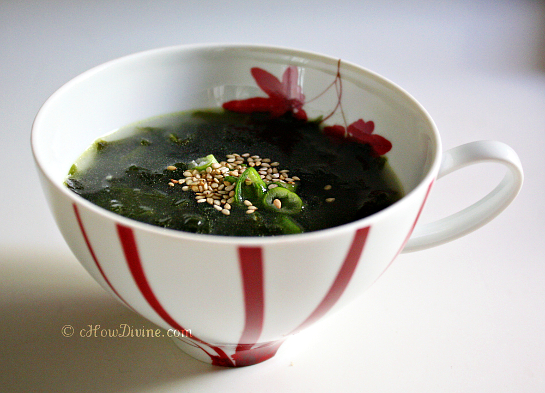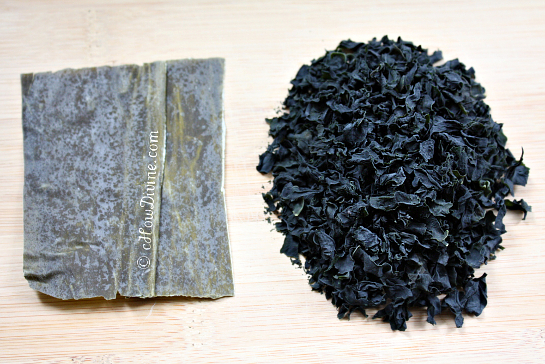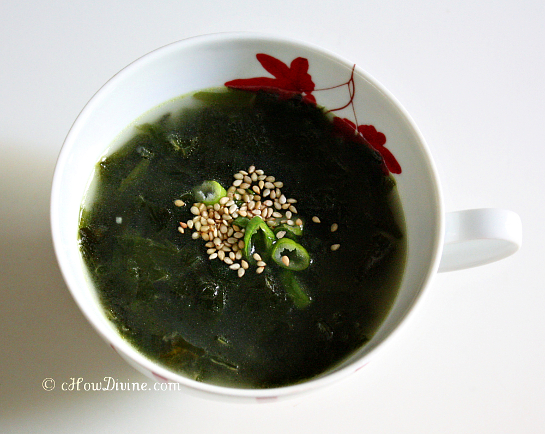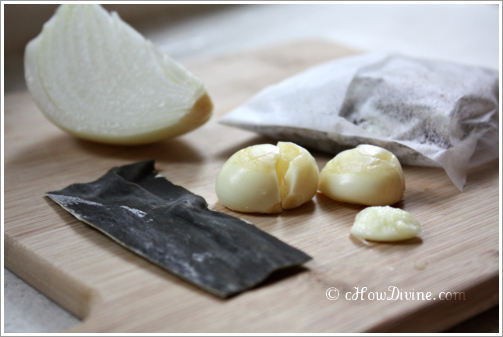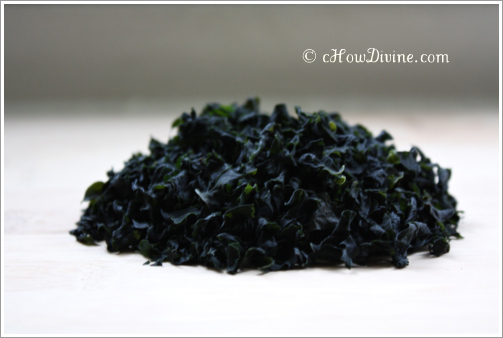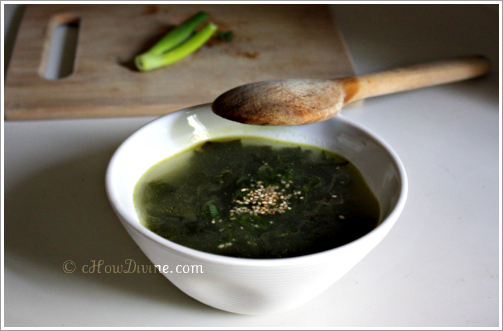Growing up, I didn’t get chicken noodle soup for colds and other ailments. I got Miyeok Guk, sometimes Samgaetang (soup with cornish game hen stuffed with sweet rice), but mostly Miyeok Guk.
Miyeok (seaweed) is rich in minerals and phytonutrients that are beneficial to the human body. In fact, Miyeok Guk is served in hospitals in Korea to postpartum women to replenish nutrients that may have been depleted during childbirth; and they continue to consume the soup during lactation due to its properties that are believed to stimulate lactation. So it’s apropos that it is traditionally served on birthdays as symbolism for the first food consumed after birth. But Miyeok Guk is not reserved for these occasions alone. It is consumed all year round due to its health benefits and deliciously savory flavor.
If that doesn’t convince you to give this soup a try, I read an article the other day about 5 nutrients that people are not getting enough of. One of the nutrients mentioned is iodine. Many believe that iodine intake from the contents of their salt shaker would suffice, but this article suggests otherwise. Iodine is required to produce hormones that control your metabolism; so deficiency in iodine may cause weight gain, and according to the article, fatigue. Miyeok is a type of sea vegetable. And sea vegetables are an excellent source of iodine.
It’s a good thing that Miyeok Guk is so healthy. Because I have been under the weather lately. It must be the change in the weather. The huge fluctuations in temperature and humidity level really messes with my system. So I’ve been sniffly and feeling really weak. And my pounding head, my sinuses and my throat have been keeping me awake at night. ugh… the dreaded cold.
I decided to make Miyeok Guk. It’s pretty easy to make. It’s nourishing for the body (and the soul). It’s soothing. It’s tasty. And it takes me to a happy place.
Miyeok Guk (Korean Seaweed Soup)
Serves 4
Ingredients (soup stock)
2″x3″ strip dashima or kombu
10 large dried anchovies
1/4 onion
2-3 garlic cloves
8 cups water
Note: Dashima is the Korean term for dried Kelp. Dashima and dried anchovies can be purchased at any Korean grocer. You can discard the heads and the innards of the dried anchovies, but I find that the taste isn’t really affected when I leave them intact. So I just leave them intact; less work the better. Convenient, pre-packaged dashima and dried anchovy packets are also available; I’m using one for this recipe. The stock can be prepared in advance and stored in the refrigerator for a few days.
Ingredients (Miyeok Guk)
6 TBs dried miyeok (unsalted dried type) or wakame
1 garlic clove, minced
5-6 cups soup stock
2 TBs tamari (gluten-free soy sauce)
salt to taste
toasted sesame oil
green onions: optional for garnish
toasted sesame seeds: optional for garnish
- Add kombu, onion, garlic cloves, and water to a pot. Bring to boil on high heat.
- When it starts boiling, add dried anchovies to the pot. Lower the heat to low (not simmer). Leave the pot UNCOVERED AFTER the dried anchovies are added. Your broth will smell fishy if the lid is closed. Boil for another 10-15 minutes. Discard onion, garlic cloves, and anchovies using a slotted spoon. Set aside the stock.
- Soak dried wakame in water for 5 minutes. (If you are using miyeok, it may need to be soaked longer depending on the type.) Be sure to put it in a large bowl. When the dried wakame rehydrates, it will greatly increase in volume. Once it is rehydrated, drain well.
- Add toasted sesame seed oil and minced garlic to a clean pot. Heat the pot on medium heat. Wait for the oil and garlic to start sizzling and bubbling. Add drained seaweed. Stir. Let it sizzle for a minute while stirring.
- Add 5-6 cups of prepared broth. Tun the heat to high. Let it come to a boil. Turn the heat down to low. Let it boil until the broth appear milky; this shouldn’t take long – about 15 minutes. Add soy sauce. Let it boil for another minute. Remove from heat. Add salt to taste. (Taste test first; I didn’t need additional salt.)
- Serve hot. Traditionally, it is served with rice. Many Koreans enjoy this with a scoop of hot rice mixed in with the soup. You can also serve it as an appetizer served in a cup or a small bowl. Give each bowl a short drizzle (or a few drops) of toasted sesame oil. Garnish with sliced green onions and toasted sesame seeds if desired.

